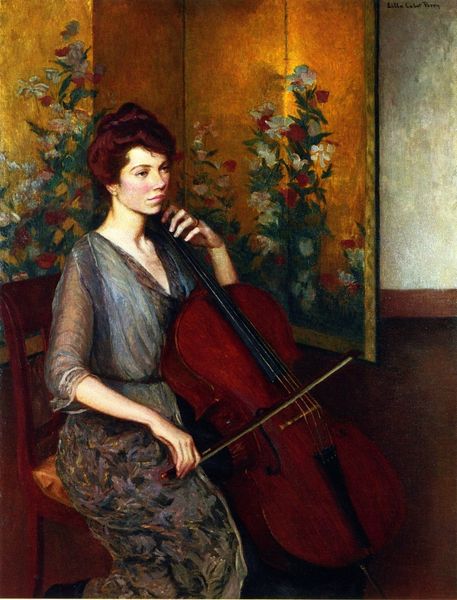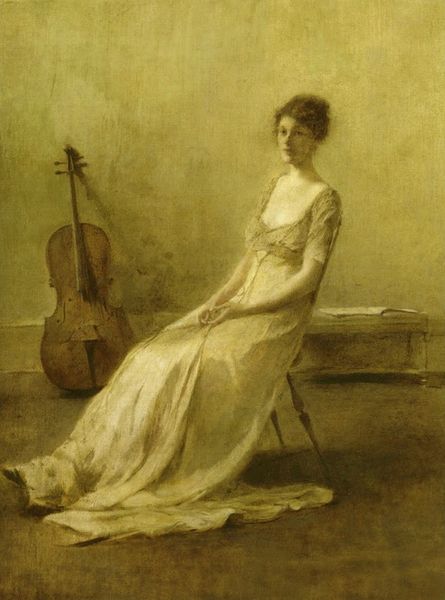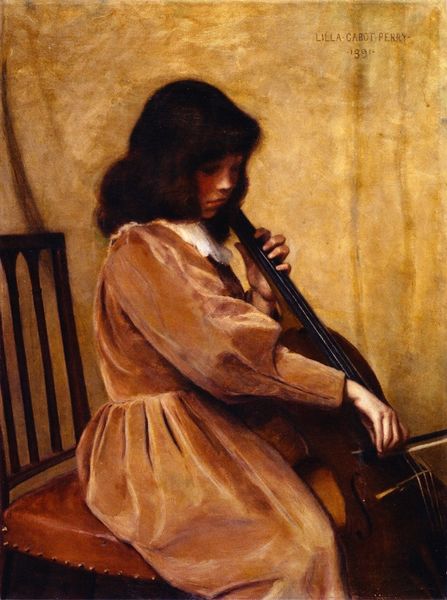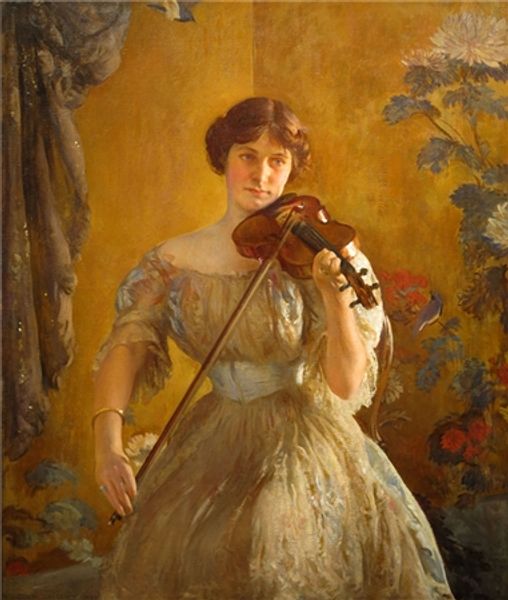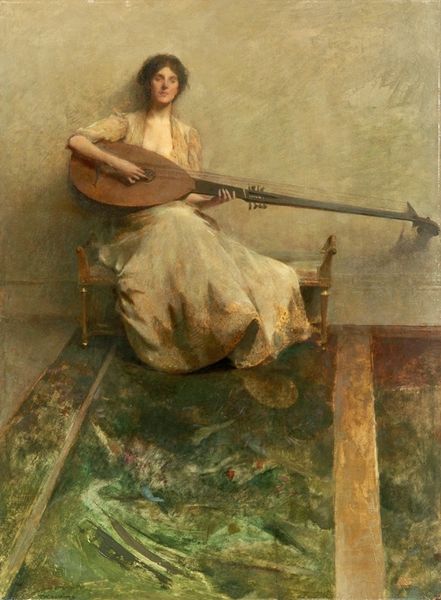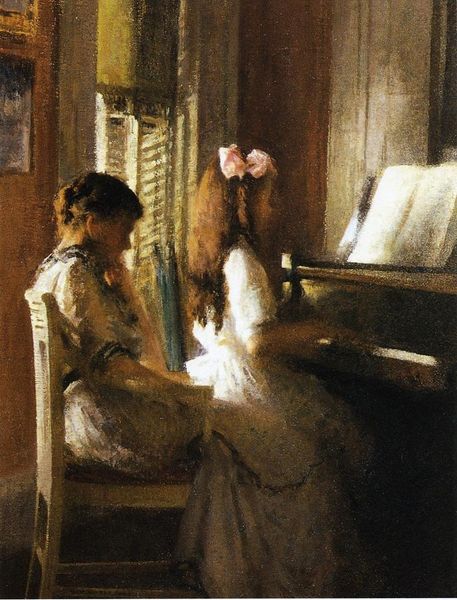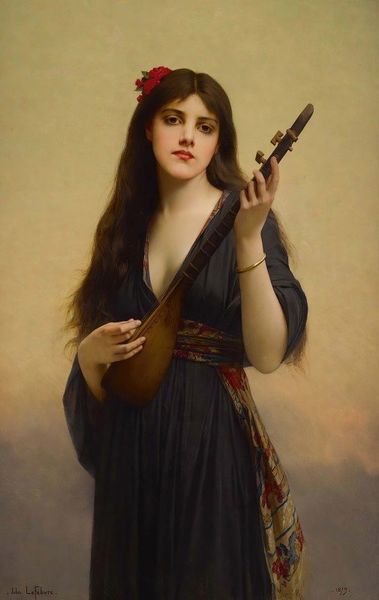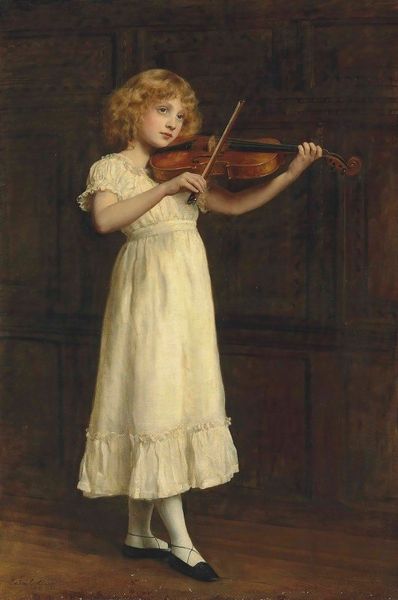
painting, oil-paint
#
portrait
#
painting
#
oil-paint
#
charcoal drawing
#
oil painting
#
portrait drawing
#
genre-painting
#
musical-instrument
#
portrait art
#
fine art portrait
#
realism
Copyright: Public domain
Curator: This is Joseph DeCamp's "The Cellist," painted in 1908. Look closely at the texture he coaxes from the oil paint, giving form to both the woman and her instrument. Editor: The overall tone feels introspective, almost mournful. There’s a quietness about the way she bows the cello—a world of emotion held within the wood and strings. Curator: It’s a lovely moment frozen in time, isn't it? DeCamp had a knack for capturing the serene dignity of everyday life, finding beauty in the quotidian act of making music. But have you considered the materials used? Editor: Indeed. This piece, while seemingly straightforward, prompts me to think about the historical context surrounding musical instrument making. Cellos were highly valued, carefully constructed using seasoned woods by skilled luthiers, then coveted by a growing bourgeois class eager for leisure activities and the performance of refinement. This connects to a wider narrative of consumer culture in the early 20th century, no? Curator: I see your point—the instrument as both a vessel of artistic expression and a marker of social standing. Yet, perhaps it's more straightforward? Perhaps it is just about the pure aesthetic pleasure, and the magic that occurs between the musician and the music; what does it do to her when the bow moves, when that instrument is speaking? Editor: Don’t you find it intriguing how DeCamp rendered the fabrics? Her sleeve, the dress, look functional, hinting at hours of practice, the physical labor necessary to achieve musical mastery. He’s elevating this everyday act but there's a labour to be recognised here. It all hints towards class distinctions. Curator: Fair enough, your analysis pulls back the layers, unearthing societal narratives within the canvas itself. Though I keep being drawn back to the subject herself—a portrait, a character study. How does she exist both within and outside the society we find ourselves in? Editor: It seems we find ourselves at slightly different registers of appreciating it; on the one hand the ethereal connection, but one cannot extract artistic expression from broader material and socio-economic forces, surely. Curator: In the end, art invites myriad interpretations; what makes art like "The Cellist" remain in our memory? The technique or its broader social implications. Editor: Both really. Otherwise art is reduced to mere decoration, don't you agree?
Comments
No comments
Be the first to comment and join the conversation on the ultimate creative platform.
